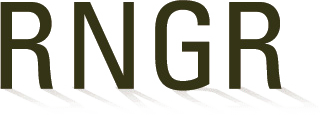
Achnatherum (lemmonii)
|
Amy Bartow Seed and Plant Production Manager USDA NRCS - Corvallis Plant Materials Center 3415 NE Granger Ave Corvallis, Oregon 97330 (541) 757-4812 ext 103 (541) 757-4733 (fax) amy.bartow@or.usda.gov http://plant-materials.nrcs.usda.gov/orpmc |
|
| Family Scientific Name: | Poaceae | ||
|---|---|---|---|
| Family Common Name: | true grasses | ||
| Scientific Name: | Achnatherum lemmonii | ||
| Common Synonym: | Stipa lemmonii | ||
| Common Name: | Lemmon's needlegrass | ||
| Species Code: | ACLEP | ||
| Ecotype: | Willamette Valley,Oregon | ||
| General Distribution: | Lemmon’s needlegrass is found naturally in northern and western California, including the Sierra Nevada Mountains, north to southern British Columbia and east to Montana, Utah, and Arizona. Usually inhabits south slopes, upland prairies, savannas, and openings in pine woodlands in full sun. | ||
| Propagation Goal: | plants | ||
| Propagation Method: | seed | ||
| ProductType: | Container (plug) | ||
| Time To Grow: | 5 Months | ||
| Target Specifications: | Well-developed crowns, roots and rhizomes filling soil profile in container. | ||
| Propagule Collection: |
Moderately difficult because plants mature seed unevenly, are low yielding, and can be sparse. Seeds can be stripped from the seedhead or the heads cut off and bagged. Seeds per pound: 95,000 with awns removed |
||
| Propagule Processing: | A brush machine or debearder is needed to remove awns. Use an air screen machine to remove chaff, weed seeds, and empty seeds. | ||
| Pre-Planting Treatments: | This species needs a period of cool/moist stratification in order to break dormancy. Highest germination occurred after 70 days of cold-moist stratification (38F). Seeds will begin to germinate in the cold-strat and more will germinate after they are removed from the cooler. | ||
Citation:
Bartow, Amy. 2015. Propagation protocol for production of Container (plug) Achnatherum lemmonii plants USDA NRCS - Corvallis Plant Materials Center Corvallis, Oregon. In: Native Plant Network. URL: https://NativePlantNetwork.org (accessed 2025/10/16). US Department of Agriculture, Forest Service, National Center for Reforestation, Nurseries, and Genetic Resources.



